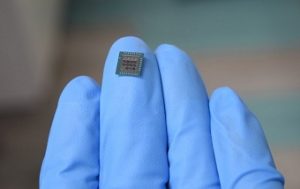
In today’s world, it’s commonplace to use your fingerprint, voice and/or face as identifying features for security. Thanks to our smartphones, we’ve become so used to using personal features as biometric authentication tools that most of us don’t think twice about it. But, as researcher Chaiyanut Jirayupat points out, these methods are not perfect.
“These techniques rely on the physical uniqueness of each individual, but they are not foolproof,” said Jirayupat, professor at Kyushu University (Japan) and first author of recent study on biometric authentication methods. “Physical characteristics can be copied, or even compromised by injury.” That’s why Jirayupat and his colleagues developed a new tool: an olfactory sensor for biometric authentication using human breath.
“Recently, human scent has been emerging as a new class of biometric authentication, essentially using your unique chemical composition to confirm who you are,” said Jirayupat.
This concept applied to biometrics and security may be new, but the overall idea of using breath as an analysis tool is certainly not. “Breathomics”—or the testing of breath for biomarkers—dates back to the 5th century BCE when Hippocrates tied “sweet smelling” (aka acetone) breath to patients with diabetes. In the years since, researchers have used breath for everything—from detecting intoxication level to diagnosing rare genetic diseases, monitoring health vital signs and even screening patients for COVID-19.
The Kyushu University team began their project by analyzing the breath of subjects to see which compounds could be viable for biometric authentication. They identified a total of 28 possible compounds, including benzophenone, decanal, octane, tetradecane and undecane—all which have been shown in previous sweat odor-based studies to be individual-specific markers.
Based on those results, the team developed an olfactory sensor array with 16 channels—each that could identify a specific range of compounds. The sensor data was then passed into a machine learning system to analyze the composition of each person’s breath and develop a profile to be used to distinguish an individual.
Testing the system with breath samples from six people, the researchers found it could identify individuals with an average accuracy of 98%. This high level of accuracy remained consistent even when the sample size was increased to 20 people.
Interestingly, the scientists found that the accuracy and reproducibility significantly improved by increasing the number of sensors.
“The [study] results indicate that a larger number of sensors are needed to discriminate complex odors,” write the authors in their study, published in Chemical Communications. “In other words, further discrimination of breath odor would be possible by increasing the number of used sensors.”
Additionally, testing was only done on subjects after they fasted for six hours. The researchers say it remains a challenge to demonstrate the system’s ability under the interference of metabolites and compounds originating from food and drink.
“The barrier must be overcome by utilizing a larger number of sensors and extracting a larger number of features from the sensing curves,” conclude the authors. “We believe that our findings in this study provide an important foundation for breath odor sensing-based biometrics.”











